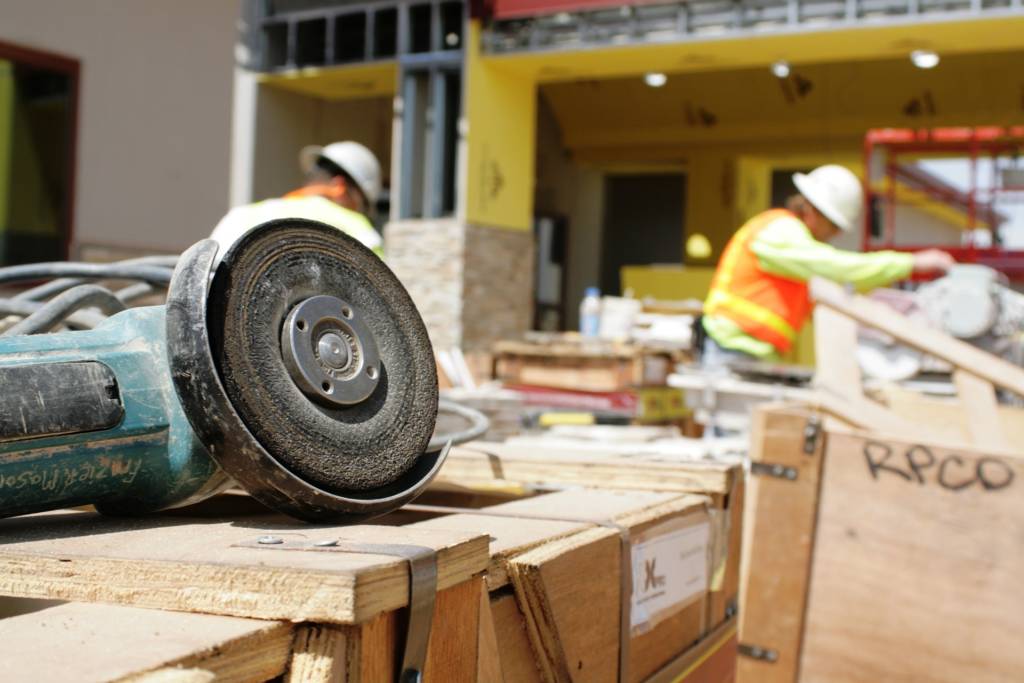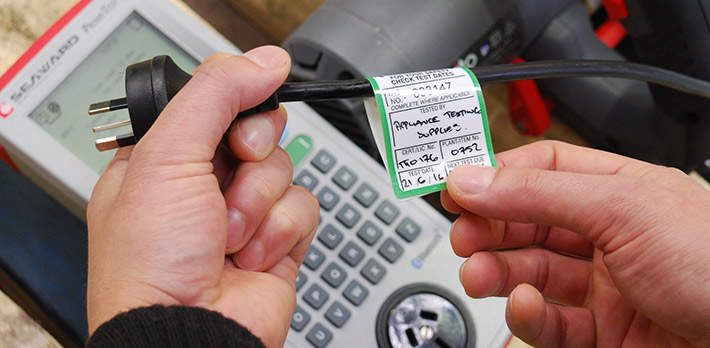The modern world relies on electricity; electricity is in use around us so much that we may forget to consider the serious risks and dangers associated with electricity.
 As children we are taught that electricity is dangerous: taught that we should not stick a knife in the toaster or into a power port, and to stay away from a fallen power pole. Despite being generally aware that electricity is dangerous, many people still take unnecessary risks around electricity, which can lead to serious harm or even death.
As children we are taught that electricity is dangerous: taught that we should not stick a knife in the toaster or into a power port, and to stay away from a fallen power pole. Despite being generally aware that electricity is dangerous, many people still take unnecessary risks around electricity, which can lead to serious harm or even death.
Electrical Risks
Electricity is relatively unavoidable in most workplaces. Safe Work Australia defines electrical risks as “the risks of death, electric shock or other injury caused directly or indirectly by electricity” (Safe Work Australia 2016). The dangers of electricity are variable. Direct contact with electricity at 50 volts (a.c. – alternating current) can have severe consequences on a persons’ health and safety and could lead to secondary incidents such as falls from heights. Contact with higher voltages can result in contact burns and internal organ damage. Faulty electrical equipment can even lead to other incidents like fires.
 Employers (or anyone conducting a business or undertaking) are obliged to manage electrical risks in their workplace. Where electrical risks cannot be eliminated, the employer should minimise the risk so far as reasonably practicable (Safe Work Australia 2018) by adopting best practice equipment, adopted safety work procedures, use of RCDs and regular testing of electrical equipment.
Employers (or anyone conducting a business or undertaking) are obliged to manage electrical risks in their workplace. Where electrical risks cannot be eliminated, the employer should minimise the risk so far as reasonably practicable (Safe Work Australia 2018) by adopting best practice equipment, adopted safety work procedures, use of RCDs and regular testing of electrical equipment.
Inspect, Test & Tag
Inspecting electrical equipment on a regular basis helps to identify damage, wear and other electrical faults before they can potentially cause harm. The safety of portable electrical appliances and equipment can be checked by undertaking Test & Tag.

Source: Test & Tag Training
Test & Tag can be conducted by someone that meets the standards of a “Competent Person”, for example, a registered electrician or licensed electrical inspector (depending on your jurisdiction). You can be qualified through a test & tag course (unless you are in QLD, where a Restricted Electrical Contractors Licence is required) (Test & Tag Training 2019).
Who should Test & Tag?
Workplaces that conduct construction and demolition activities are required to comply with AS/NZS 3012:2010: Electrical installations – Construction and demolition sites. Generally, construction, demolition and mining sites test and tag their electrical appliances every three months (Test & Tag Training 2019) as per these regulations.
Test & Tag is not a legislative requirement for other workplaces. However, it is the employer’s responsibility to ensure that that electrical risk is minimised (Test & Tag Training 2019). Testing and Tagging is one of the generally accepted controls employers can use to address risk by checking that electrical appliances are safe. Lower-risk workplaces like offices, retail shops and classrooms can find guidance on inspecting and testing electrical equipment in AS/NZS 3760:2010 In-service safety inspection and testing of electrical equipment.
What is involved?
 The Test & Tag process involves a visual inspection of electrical equipment followed by an electrical test using a Portable Appliance Tester. A tag is then attached to the tested item to confirm that it has been tested. The tag will also show details of who tested the equipment, the test date and when the next test is due (Test & Tag Training 2019).
The Test & Tag process involves a visual inspection of electrical equipment followed by an electrical test using a Portable Appliance Tester. A tag is then attached to the tested item to confirm that it has been tested. The tag will also show details of who tested the equipment, the test date and when the next test is due (Test & Tag Training 2019).
A regular visual inspection of electrical equipment can detect many electrical faults by identifying obvious damage, wear and faults. A visual inspection typically involves checking for:
- Damage, defects or modifications to electrical equipment.
- Flexible cords are not damaged and are effectively anchored to equipment, plugs, connectors and cord extension sockets.
- Indications of exposure to excessive heat/chemicals/moisture, including discolouration.
- Integrity of protective earth and insulation resistance.
- Operating controls are working
- Covers and guards are secured & working as intended
- Ventilation inlets and exhausts are efficient & unobstructed
- The current rating of electrical equipment matches the current rating of the plug it is connected too.
(Safe Work Australia 2016)
Other electrical faults and deterioration that cannot be successfully identified by visual inspection can be detected by regular testing with appropriate testing equipment (portable appliance tester).
You do not have to test brand-new electrical equipment that has not been used before. However, it is recommended that you still visually inspect brand new-equipment to ensure that it has not been damaged during manufacture, transport or installation.
It is good practice to keep a record of the results of test & tag inspections including details of the inspector (including licence or certificate number if applicable), date of inspection, results, date of next inspection (WorkSafe WA 2014).
The Australian Standards provide recommendations on how regularly you should Test and Tag electrical equipment, based on the environmental conditions of the workplace. Industries such as construction, mining or demolition required testing every 3 months as per AS/NZS 3012 guidelines and will use a specific Test & Tag colour chart system with their tags (Portable Appliance Testers 2019). There are four coloured tags that align to each particular 3-month period: Red Tag (Dec-Feb), Green Tag (Mar-May), Blue Tag (Jun – Aug) and Yellow Tag (Sep – Nov).

Source: Appliance Testing Supplies
Other general electrical safety tips for Office & Home
To minimise electrical risks and hazards at your office & home consider the following safety tips:
- Get a licensed electrician for all electrical wiring or repairs
- Take care of all electrical cords and appliances
- Ensure appliance cords are in a good condition – if not dispose of them appropriately
- Avoid overloading a circuit by not using piggy-back or ‘double adaptor’ connections – use power boards instead (look for ones that have in-built safety devices or surge protection)
- Install safety switches and test them every 3 months
- If you have young children in the house or workplace use childproof power outlets covers
- Look out for overhead powerlines during bad weather or strong winds
- Look out for underground powerlines (Dial Before You Dig)
(EnergyAustralia 2019)
Integrate Sustainability can assist with identifying your workplace obligations to provide a safe working environment, including management of electrical risk. Please contact us by calling 0894680338 or send us an email (enquiries@integratesustainability.com.au) if you would like to know more.
Useful Resources
Follow the following links for more information on:
- Managing electrical risks in the workplace – Safe Work Australia
- Guide to testing and tagging portable electrical equipment and residual current devices at workplaces – WorkSafe WA
Download PDF: ISPL Insight – Electrical Safety – Test & Tag
References
EnergyAustralia. 2019. Electrical Safety. Accessed February 7, 2019. https://www.energyaustralia.com.au/home/electricity-and-gas/energy-saving-and-safety/electrical-safety.
Portable Appliance Testers. 2019. Test Tag Colours. Accessed February 11, 2019. https://www.portableappliancetesters.com.au/test-and-tag-colours.
Safe Work Australia. 2018. Electrical safety. September 4. Accessed February 11, 2019. https://www.safeworkaustralia.gov.au/electrical-safety.
—. 2016. Model Code of Practice Managing electrical risks in the workplace. February. Accessed February 11, 2019. https://www.safeworkaustralia.gov.au/system/files/documents/1705/mcop-managing-electrical-risks_in_the_workplace-v3.pdf.
Test & Tag Training. 2019. What is Test & Tag? Accessed February 8, 2019. https://www.testandtagtraining.com.au/what-is-test-and-tag.
WorkSafe WA. 2014. Guide to testing and tagging portable electrical equipment and residual current devices at workplaces. April. Accessed February 11, 2019. https://www.commerce.wa.gov.au/sites/default/files/atoms/files/guide-testing-and-tagging-portable-electrical-equipment-and-residual-current-devices.pdf.

